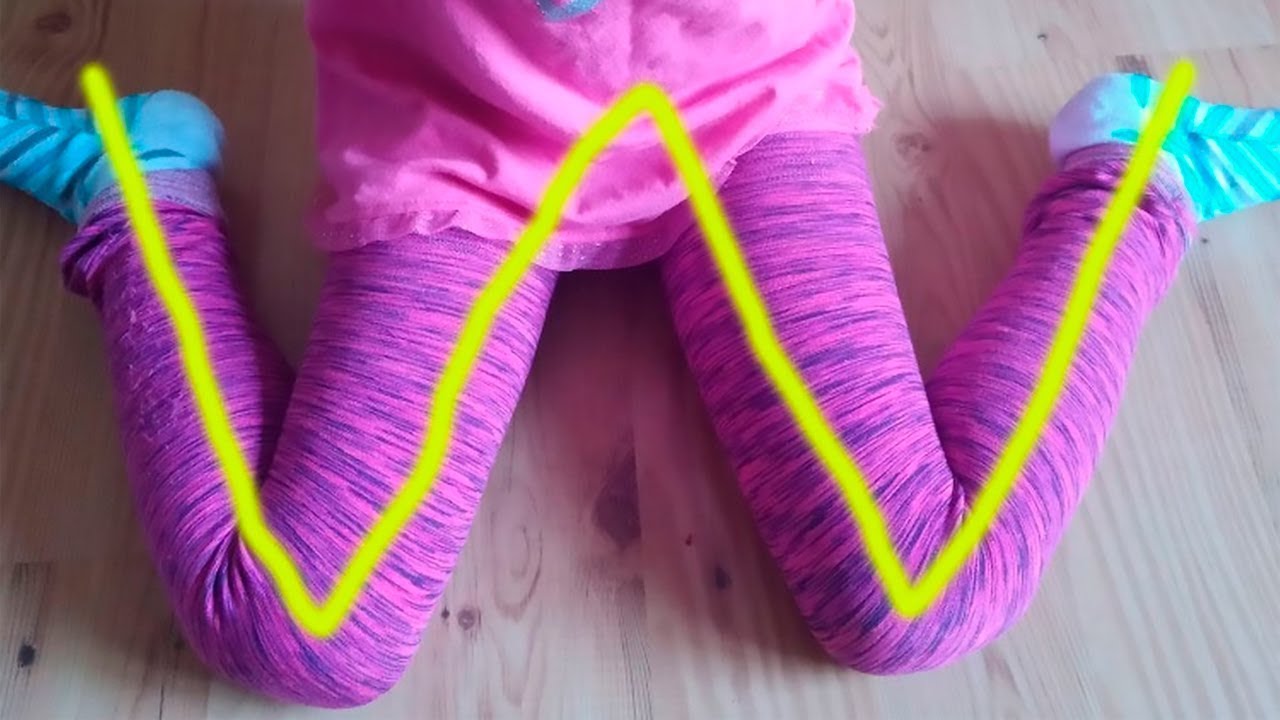
Kids love to run, skip, jump, and twirl. They’re naturally active and tend to have batteries that rarely need charging. Yet, when quiet time does come, or when there are short breaks of inactivity, they plop down on the ground with a toy or a book. As parents we need to be attentive to their sitting positions.
Babies often squat with their feet flat on the ground and at times will fold their legs and sit “Indian style.” These are both natural and healthy sitting positions, but one that’s also popular could bring more damage to their rapidly growing bones and joints.
Perhaps the worst position that a child could sit in is referred to as the “W” sitting position. It’s when the child sits with knees, inner thighs, and feet flat on the floor. The feet position themselves even with the spine, and the legs form a “W.” Kids like it because they feel secure and stable. They don’t ever think about the stress that it creates and the consequences that could arise later in life.
This sitting position is specifically prejudicial to the knees and hips. Some common initial complications from sitting in the “W” position include dislocation. It places both knees and hips in unnatural angles, and puts stress on the spine as well. Sitting like this also shortens and tightens certain leg muscles. It could lead to pulls and strains that are unnecessary.
So, if kids shouldn’t sit in a “W” what other options are available? How should we correct our kids when we see them sitting like this?
Consider another letter of the alphabet. Instead of the “W” suggest to your child that he sit like “V.” You could even show him the shape of his legs in positions and use it as a teaching point. This provides the same amount of stability without all the threats of muscle damage or dislocation. It even gets the child an opportunity to stretch muscles while having increased mobility on the floor. They can twist and bend freely without hindrance.
Be consistent and correct your child every time you see him sitting in the “W.” Encourage proper habits early. They’re easier to teach in the beginning. Bad habits are more difficult to break.
The older kids get, the less they will sit in the floor, but while we have an opportunity we should help them remain healthy and not do anything that might bring about more risks.
Source(s):
http://www.skillsforaction.com/w-sitting
http://www.pediatricservices.com/parents/pc-22.htm
—————————————-
For more information and references, check the article on our blog:
https://www.naturalcures.me
Disclaimer: The materials and the information contained on Natural Cures channel are provided for general and educational purposes only and do not constitute any legal, medical or other professional advice on any subject matter. These statements have not been evaluated by the FDA and are not intended to diagnose, treat or cure any disease. Always seek the advice of your physician or other qualified health provider prior to starting any new diet or treatment and with any questions you may have regarding a medical condition. If you have or suspect that you have a medical problem, promptly contact your health care provider.